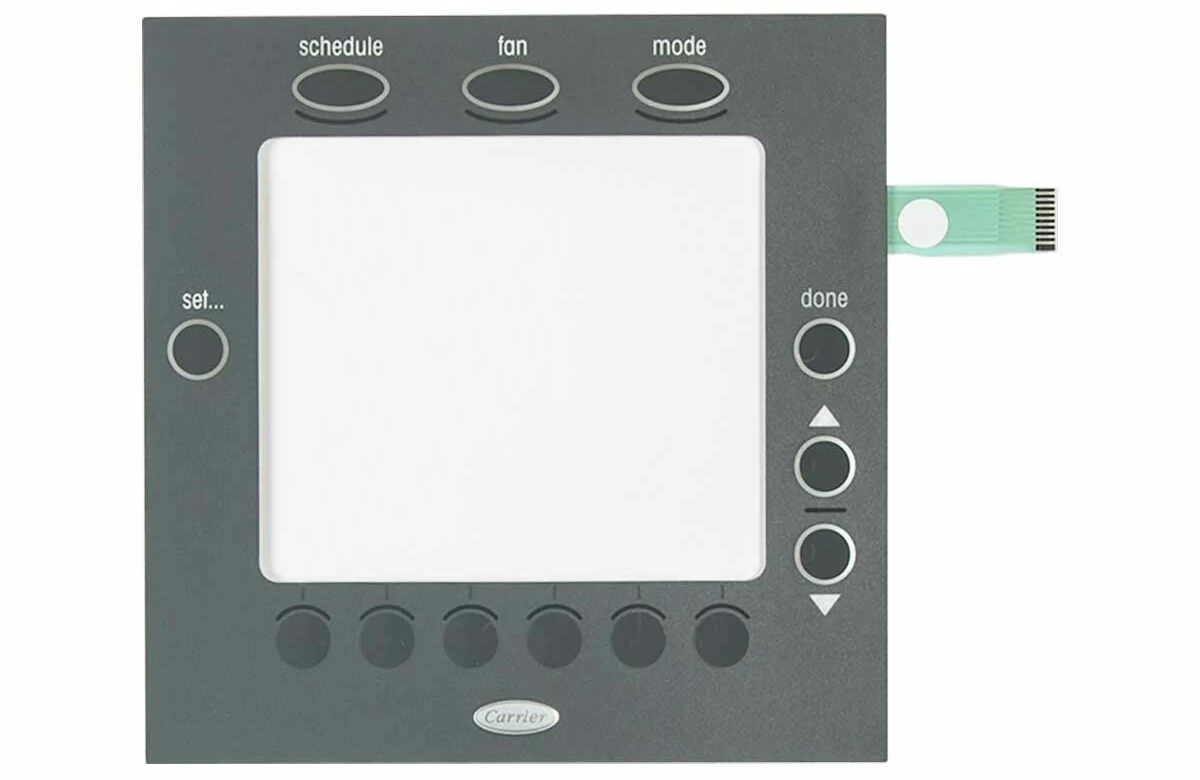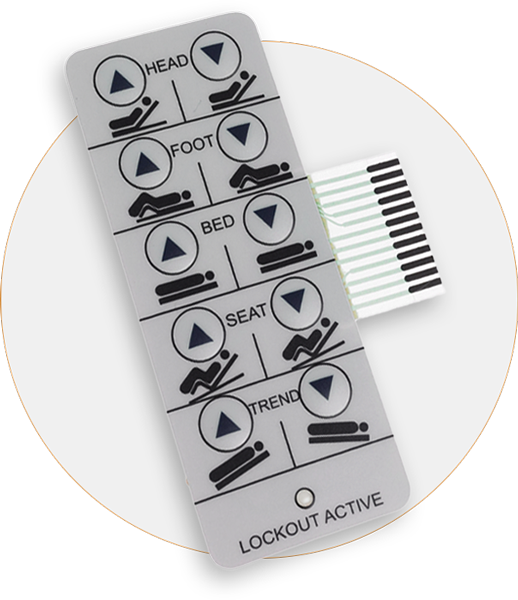The Ultimate Source on Membrane Changes: Layout, Capability, and Applications
Membrane changes offer as an appealing junction of design and performance, playing a crucial role in modern-day interface across various industries. This source unloads the crucial parts that add to their efficiency, consisting of visuals overlays and circuit traces, while additionally elucidating the mechanisms behind their stress activation. As we explore the diverse applications of membrane layer switches, it becomes apparent that their flexibility and sturdiness are crucial in atmospheres ranging from medical care to customer electronics. Nonetheless, the nuances of their design and operational concepts might disclose even much deeper insights worth considering.

Recognizing Membrane Layer Switches
Membrane switches are a sort of interface innovation extensively made use of in different electronic gadgets, defined by their thin, flexible style and functionality. These switches include multiple layers that include graphic overlays, glue layers, and circuitry, allowing a effective and small user interface for individuals. They can be located in devices, medical tools, and industrial control board, giving a reputable technique for individual communication.
One of the main advantages of membrane layer buttons is their ability to resist impurities such as dust and dampness, making them appropriate for atmospheres where durability is crucial. Their low-profile layout allows for seamless integration into various applications, while the personalized visuals overlays improve user experience by supplying clear aesthetic comments. Additionally, membrane layer buttons can accommodate a range of innovations, such as tactile responses and backlighting, further boosting their usability.
The production process for membrane switches typically involves screen lamination, die-cutting, and printing strategies, making certain precision and uniformity in production. On the whole, membrane layer switches over stand for a efficient and functional service for contemporary digital gadgets, combining functionality with aesthetic appeal in customer interface layout.
Trick Components and Layout Aspects
A range of essential components and layout elements collaborated to create an effective membrane switch. At the core, the graphic overlay serves both aesthetic and useful functions, offering a straightforward interface while shielding inner parts from ecological variables. The choice of products, generally polyester or polycarbonate, affects sturdiness and responsive comments.
Underneath the overlay, the adhesive layer makes sure the switch adheres safely to the substratum, which can be plastic, steel, or glass. The spacer layer is crucial, as it keeps the essential void between the overlay and the circuit layers, enabling for reliable actuation. Membrane Switches. Circuit traces, generally made from conductive ink or adhesive, are published on a flexible substratum, allowing electrical signals to be sent when stress is applied
Design considerations additionally include the plan of responsive domes or embossing that provide physical responses to the user, boosting the overall experience. In addition, the design and spacing of the buttons must be optimized for convenience of usage, ensuring that users can navigate the user interface without effort. On the whole, these parts and design aspects work synergistically to develop a trustworthy, practical membrane button customized to certain applications.
Performance and Operation System
At the heart of efficient capability for membrane switches exists their operational system, which promotes individual communication with a straightforward yet effective style. These switches operate the concept of stress activation, where a user applies pressure to an assigned location of the button (Membrane Switches). This action presses the layers of the switch, completing an electric circuit that sends out a signal to the linked device
The building and construction generally includes a leading visuals layer, a glue spacer layer, and a bottom circuit layer, which jointly create a robust interface. When pressure is used, the top layer breaks down against the lower circuit layer, enabling conductive traces to link. This style not only allows clear responsive comments yet additionally makes sure sturdiness and integrity, Extra resources as the buttons are typically resistant to dirt and wetness.
Additionally, the versatility of membrane layer changes enables integration with different technologies, including LED indicators and microcontrollers, improving their performance. By giving a structured interface that decreases mechanical wear, membrane layer switches remain a preferred selection in applications varying from consumer electronic devices to industrial tools, making certain optimum performance and user satisfaction throughout diverse environments.
Kinds Of Membrane Buttons

An additional considerable category is brightened membrane switches, which integrate backlighting to improve exposure in low-light conditions. These switches are usually used in control panels and dashboards where clear visibility is essential.
Additionally, there are customized membrane layer switches over designed to meet certain dimensional, visual, and useful demands. These personalizations can include special forms, colors, and formats, permitting for seamless integration into numerous tools.

Applications Throughout Various Industries
How do membrane layer switches boost performance across diverse sectors? These flexible components are essential to many applications, delivering structured interface and robust efficiency. In the medical market, membrane layer buttons play a critical role in tools such as analysis tools and client monitoring systems, where dependability and convenience of cleaning are critical. Their capacity to hold up against extreme atmospheres makes them optimal for laboratory tools and surgical devices.
In the automobile industry, membrane switches are typically used in control panels and control panels, giving intuitive controls that enhance vehicle driver safety and benefit. The customer electronic devices field likewise takes advantage of their personalized and light-weight attributes, making it possible for smooth styles for mobile phones and home appliances.
In addition, membrane switches find applications in industrial automation, where they add to efficient machinery procedure more info here and surveillance systems. Their resistance to dirt and wetness guarantees functionality popular conditions (Membrane Switches). In addition, the food and drink industry utilizes membrane layer buttons for tools control, where hygiene and toughness are important
Conclusion
In final thought, membrane changes stand for a critical innovation in customer interface technology, identified by their one-of-a-kind style and capability. The convenience view it of membrane changes facilitates their application across varied markets, from clinical devices to consumer electronics.
Membrane changes offer as an appealing junction of layout and capability, playing a pivotal function in modern-day customer interfaces throughout different markets.Membrane layer buttons are a kind of customer interface technology extensively utilized in numerous digital devices, identified by their thin, versatile layout and capability.At the heart of effective capability for membrane switches over lies their functional system, which promotes user communication with an easy yet effective style. These switches run on the principle of pressure activation, where a customer uses pressure to a designated location of the switch.In conclusion, membrane layer changes stand for a vital development in individual interface modern technology, characterized by their distinct layout and performance.